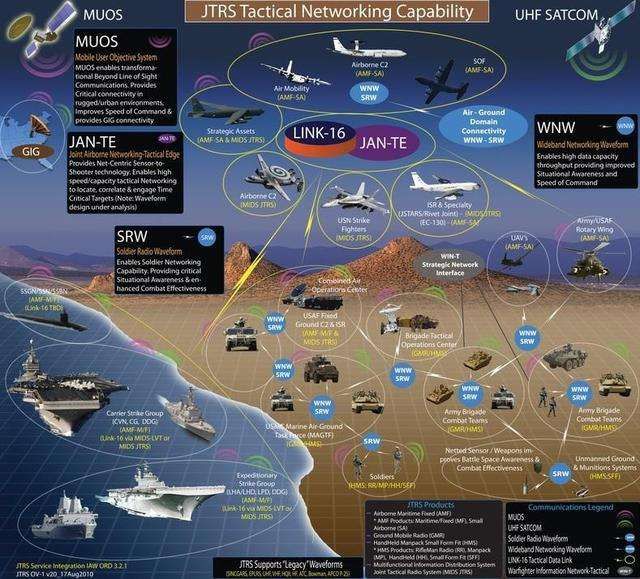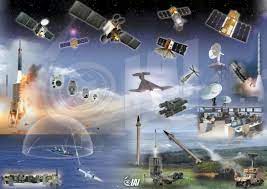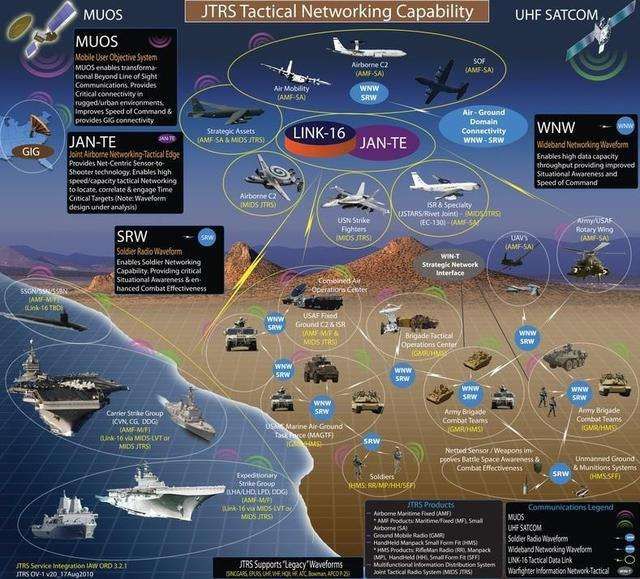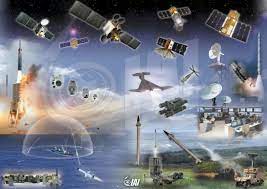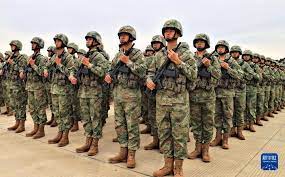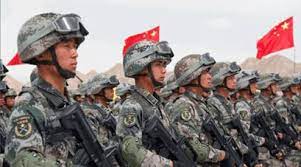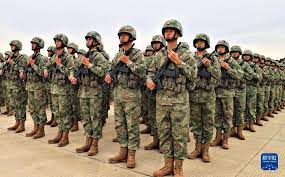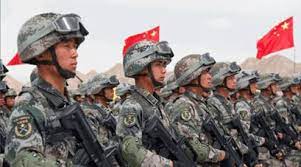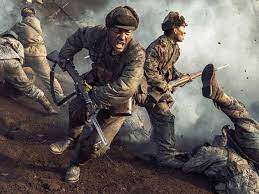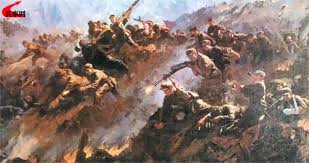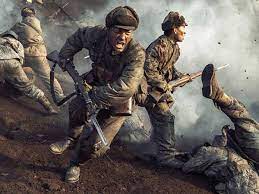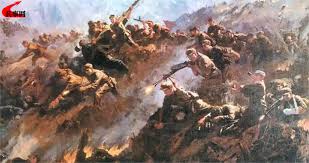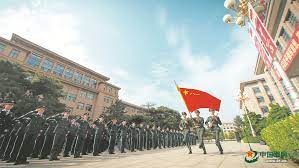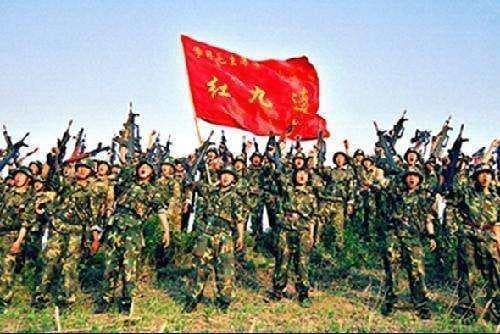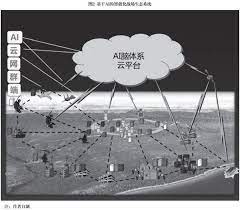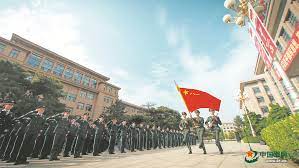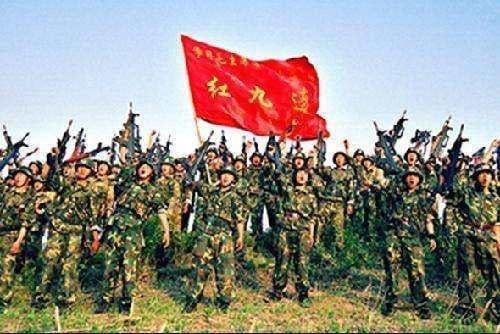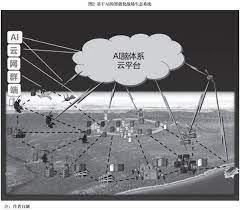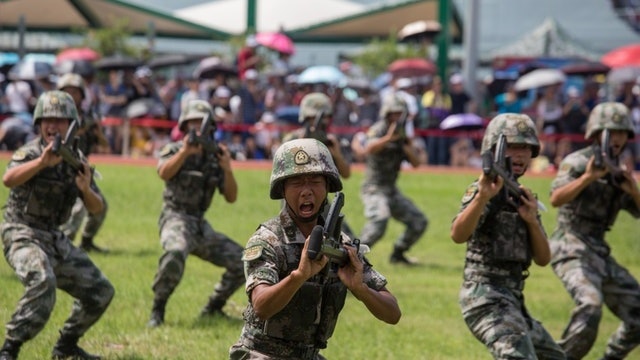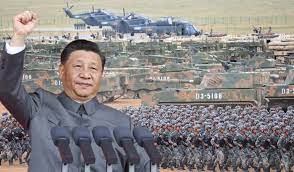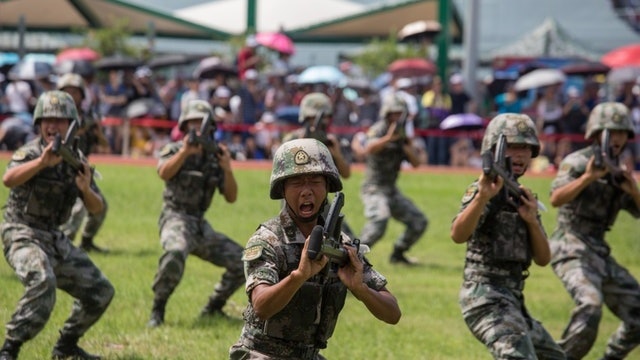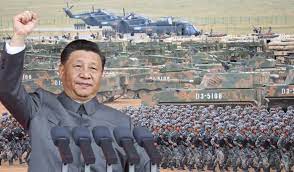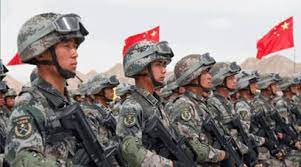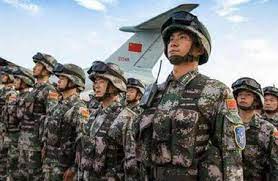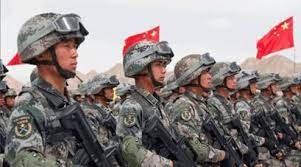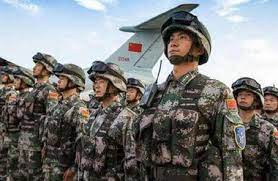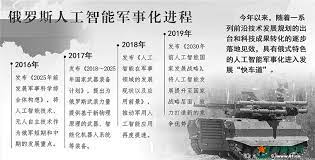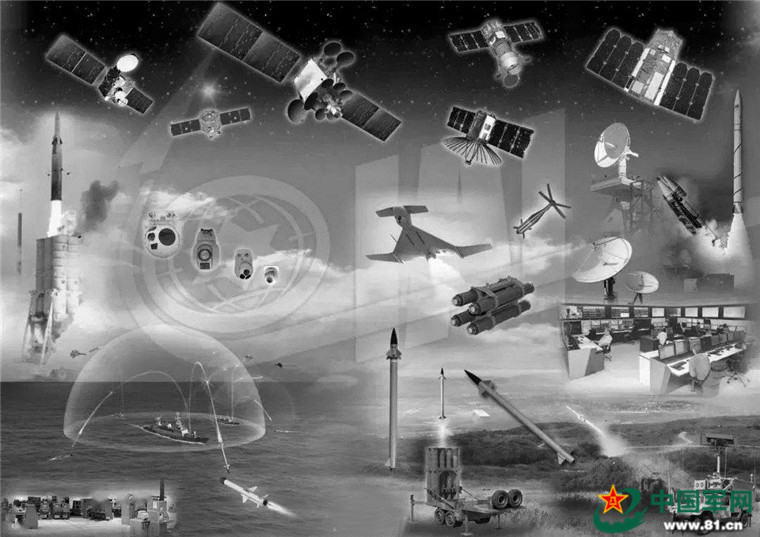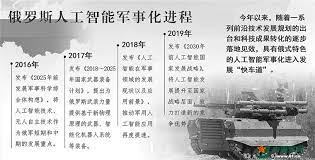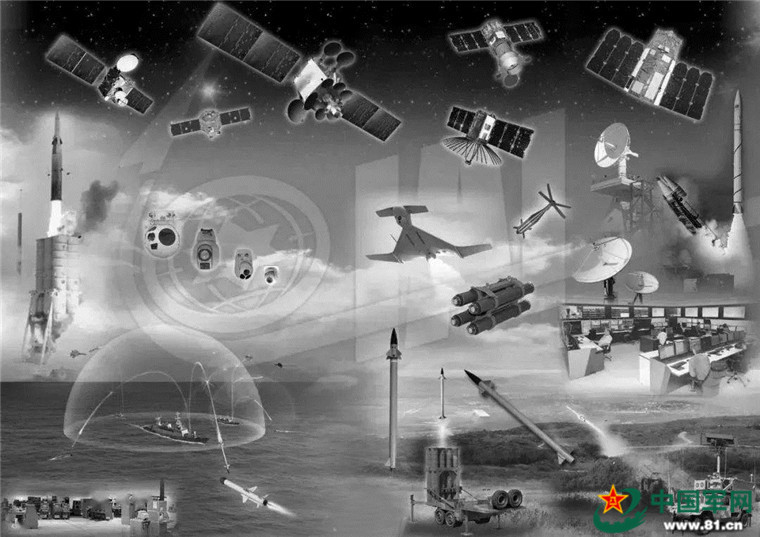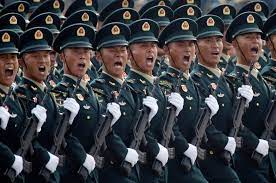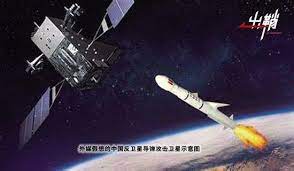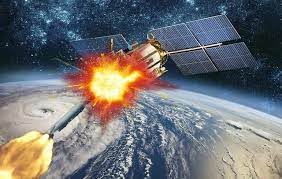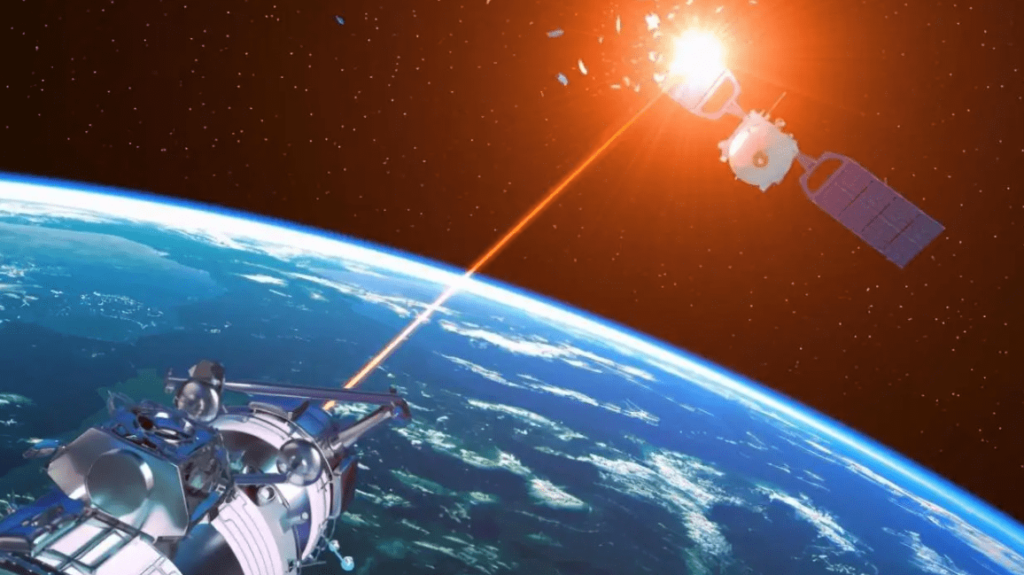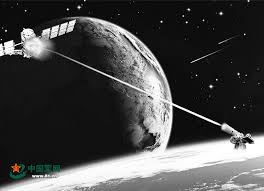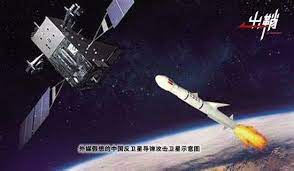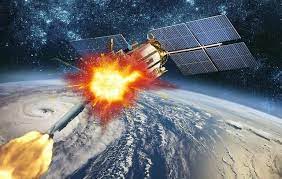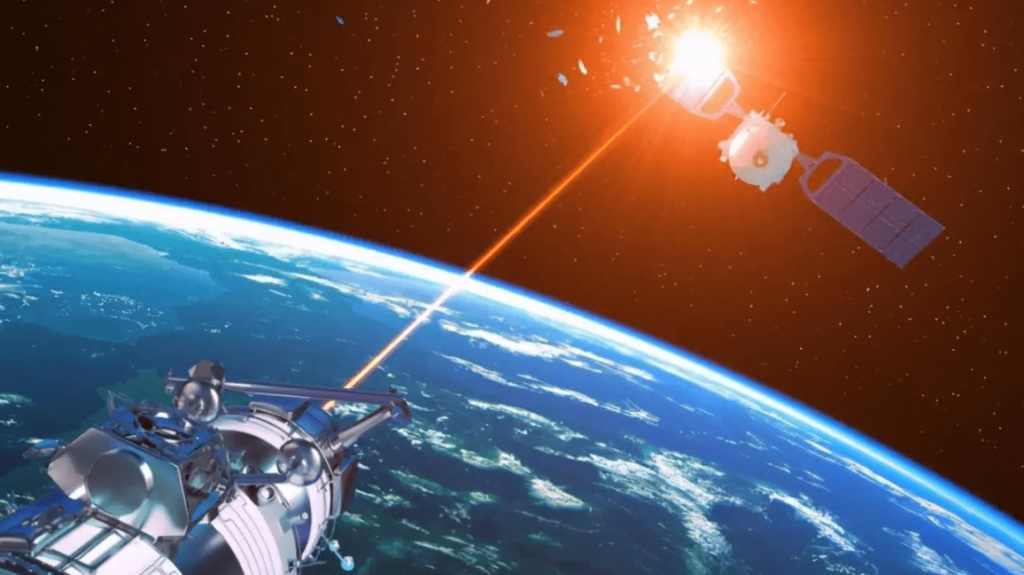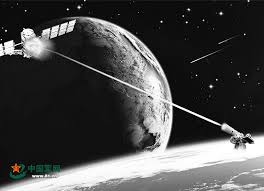China’s People’s Liberation Army Focusing on Operationalizing Intelligent Warfare
隨著人工智慧在軍事領域的廣泛應用,智慧化戰爭逐漸成為備受矚目的焦點話題。 歷史多次證明,戰爭形態的演進將引發致勝機理的深刻改變。 在資訊化戰爭向縱深發展、智慧化戰爭初露端倪的當今時代,世界主要國家軍隊紛紛下大力推動軍事智慧化,其中的諸多動向值得關注。
加強頂層設計
勾勒智能化戰爭“路線圖”
在新一輪科技革命與產業革命推動下,智慧化軍事變革正向縱深發展。 美國、俄羅斯、日本等國紛紛把人工智慧視為「改變戰爭遊戲規則」的顛覆性技術,並事先佈局,加強頂層設計和規劃引領,探索人工智慧的軍事應用方向。
美軍在《為人工智慧的未來做好準備》《國家人工智慧研究與發展戰略計畫》《人工智慧與國家安全》《2017至2042財年無人係統綜合路線圖》《美國人工智慧計畫》: 在首個年度報告》等文件中,詳述了人工智慧的發展現狀和發展規劃,並將人工智慧發展提升至國家戰略層面。 2021年,美軍在發布的《美國防部人工智慧態勢:評估與改進建議》中指出,美軍發展人工智慧應考慮三個指導性問題:與美軍相關的人工智慧現處於何種狀態;美軍目前 在人工智慧方面的態勢如何;哪些內部行動以及潛在的立法或監管行動可能會增強美軍的人工智慧優勢。
俄羅斯投入大量資源,以維持與美國在人工智慧軍事領域應用競爭的平衡。 2021年,俄總統普丁在年度首場國防部會議上表示,人工智慧將大幅推動軍事領域變革,俄國聯邦武裝力量要加速機器人、智慧單兵系統和武器智慧化模組等人工智慧應用技術的研發 工作,早日形成核心技術能力和戰場競爭優勢。 《2025年前未來軍用機器人技術裝備研發專題綱要》《未來俄軍用機器人應用構想》《人工智慧在軍事領域的發展現狀以及應用前景》等文件,從國家層面為俄軍推動人工智慧軍事應用確立了 一系列機制。
日本政府也推出了《人工智慧戰略》,旨在引領人工智慧技術研發和產業發展。 在英國制定的《機器人與人工智慧》戰略規劃中,強調了人工智慧在戰場建設中的應用。 2021年1月,澳洲國防部發布《打好人工智慧戰爭:未來智慧化戰爭之作戰構想》,這份文件探討如何將人工智慧應用到陸、海、空作戰領域。
創新作戰概念
推動智慧化戰爭“思想先行”
作戰概念創新對軍事科技發展、戰爭形態演變具有思想牽引作用。 過去人們對戰爭的認識與掌握,主要源自於對實務經驗的歸納總結,作戰概念即經驗概念。 未來智慧化戰爭時代,作戰概念不僅是經驗概念,更是對作戰的構想、設計與前瞻。
美陸軍提出「多域戰」概念,要求陸、海、空、天、電磁、網路等各域作戰能力深度整合與密切協同。 為此,美陸軍先後發布《多域戰:21世紀合成兵種的發展(2025至2040)》《美國陸軍多域戰(2028)》《運用機器人與自主技術支援多域戰》等白皮書。 2021年3月,美陸軍部發布文件《陸軍多域轉型:準備在競爭和衝突中取勝》,顯示「多域戰」已成為引領美陸軍轉型發展的一面「旗幟」。 美國防高級研究計畫局提出「馬賽克戰」概念,旨在打造一種由不同作戰功能單元構成的、以先進電腦技術與網路技術為基礎的、高度分散、具有高度適應性的「殺傷網」。 美國防部大力支持「聯合全域作戰」概念。 2020年3月,美空軍率先將「聯合全域作戰」寫入條令,探討空軍如何在「聯合全域作戰」中發揮作用。
俄軍提出「指控瓦解」概念。 「瓦解」是當前俄羅斯最重要的作戰概念之一,俄軍電子戰部隊把使敵人的訊息、指控、電子戰和機器人系統失效作為目標,認為這一目標將「決定所有軍事行動的命運」。 擾亂敵方部隊和武器系統的指揮和控制,降低敵方偵察和使用武器的效率,是進行電子戰的首要任務。 目前,俄軍正在考慮組建12種類型的電子戰部隊。 俄軍也提出「非核遏制體系」概念,核心是使用非核武進攻性戰略武器遏制對手。 其所定義的非核武攻擊性戰略武器既包括所有裝備非核彈頭的彈道飛彈,也包括戰略轟炸機和遠程空基、海基巡航飛彈。 此外,俄軍也提出「混合戰爭」概念,希望利用人工智慧系統謀求戰場資訊優勢。
英國防部提出「多域融合」概念,將發展具備智慧化能力的新型指控系統,以實現全面、持久、準確、快速的戰場感知與力量協同。
注重技術研發
塑造智慧化戰爭作戰模式
人工智慧發揮效用的關鍵是與其他多種技術的組合,這種組合也被描述為「人工智慧堆疊」。 各種技術透過互動的方式產生組合效應,進而提升每項技術所產生的能力與效果。 在人工智慧技術支援的智慧化戰爭中,「人機一體、雲腦控制」的協同作戰模式,「混搭編組、群體智慧」的集群作戰模式,「智慧主導、攻智為上」的認知作戰 模式等,將不斷更新人們對戰爭的認知。
聚焦創新專案研發。 美軍正在大力推廣人工智慧晶片在現有武器裝備系統中的應用,為武器加上“智慧大腦”,使之具備類人思考和自主互動能力。 2021年10月,美海軍推出被視為“當前最高優先事項”的“超越計劃”,旨在通過構建海上作戰軍事物聯網,整合有人無人聯合編隊,加速交付人工智能和機器學習工具,支撐 全新的智慧化海軍架構,提升大規模火力殺傷、實現海軍智慧化分散式作戰。 此外,美國防高級研究計畫局也進行了「自適應電子戰行為學習」「自適應雷達對抗」「極端射頻頻譜條件下的通訊」等認知電子戰項目,研發出認知雷達電子戰系統原型 機。 俄國防部智慧技術裝備科研試驗中心與俄聯邦科學院控制問題研究所合作,開發測試了包括無人機群指揮控制在內的自主智慧演算法,也與國家航空系統科研所共同開發基於神經網路原理的物體 自動辨識軟體系統。
組成創新研發機構。 新技術的不斷湧現是軍事智慧化蓬勃發展的不竭動力,高水準的軍事智慧化建設離不開專職機構的技術研發。 一些國家和軍隊組成研發中心,注重從技術層面創新發展。 美國國防部建立了聯合人工智慧中心,計劃將該中心打造成國家級重點實驗室,用於領導數百個與人工智慧相關的項目,確保對人工智慧相關數據資訊的高效利用,以保持美國 在該領域的技術優勢。 俄羅斯組成了人工智慧和大數據聯盟、國家人工智慧中心和隸屬國防部的機器人技術科研試驗中心,主要進行人工智慧和資訊科技領域的理論和應用研究。 法國成立了創新國防實驗室,英國設立了人工智慧實驗室,印度組成了人工智慧特別工作小組,進行相關技術探索。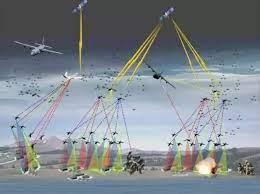
加強裝備研發列裝。 近年來,多國重視研發智慧武器裝備,無人飛行器、無人戰車、無人艦艇、無人潛航器等不斷湧現。 目前,美空軍已開始在F-35戰機上實踐「人機協同,人在迴路」的作戰理念。 美XQ-58A「女武神」隱身無人機先前主要與F-35和F-22戰機進行人機協同作戰,2021年4月該隱身無人機成功投放ALTIUS-600小型無人機系統,進一步 提升了其有人無人協同作戰能力。 俄羅斯正聚焦偵察監視、指揮決策、火力打擊、作戰支援等多個領域,展開智慧裝備研發和列裝工作,計畫到2025年將無人作戰系統在武器裝備中的比例提高到30%以上。 以“天王星”系列和“平台-M”“阿爾戈”等型號為代表的俄地面無人作戰武器發展迅速。 其中,Nerekhta無人戰車可搭載遙控機槍和火箭發射器,除擁有一般裝甲車的戰鬥力外,還兼具運輸和偵察功能。 此外,日本自衛隊計劃在2035年正式部署具有較強作戰能力的無人空中編隊。
現代英語:
With the widespread application of artificial intelligence in the military field, intelligent warfare has gradually become a hot topic. History has proven many times that the evolution of war patterns will trigger profound changes in the winning mechanism. In today’s era when information warfare is developing in depth and intelligent warfare is beginning to emerge, the militaries of major countries in the world have vigorously promoted military intelligence, and many of these trends deserve attention.
Strengthen top-level design
Outline a “roadmap” for intelligent warfare
Driven by a new round of scientific and technological revolution and industrial revolution, intelligent military transformation is developing in depth. The United States, Russia, Japan and other countries have regarded artificial intelligence as a disruptive technology that “changes the rules of the war game” and have made arrangements in advance, strengthened top-level design and planning guidance, and explored the direction of military application of artificial intelligence.
In “Preparing for the Future of Artificial Intelligence”, “National Artificial Intelligence Research and Development Strategic Plan”, “Artificial Intelligence and National Security”, “Comprehensive Roadmap for Unmanned Systems from Fiscal Years 2017 to 2042” and “U.S. Artificial Intelligence Plan”: “First Annual Report” and other documents detail the development status and development plans of artificial intelligence, and elevate the development of artificial intelligence to the national strategic level. In 2021, the U.S. military pointed out in its “U.S. Department of Defense Artificial Intelligence Situation: Assessment and Improvement Suggestions” that the U.S. military should consider three guiding questions when developing artificial intelligence: What is the current status of artificial intelligence related to the U.S. military; What is the posture regarding artificial intelligence; what internal actions and potential legislative or regulatory actions may enhance the U.S. military’s artificial intelligence advantage.
Russia has invested a lot of resources in order to maintain a balance with the United States in the competition with the United States in the military application of artificial intelligence. In 2021, Russian President Vladimir Putin stated at the first Ministry of Defense meeting of the year that artificial intelligence will greatly promote changes in the military field, and the Russian Federation’s armed forces must accelerate the research and development of artificial intelligence application technologies such as robots, intelligent individual soldier systems, and weapon intelligent modules. work to form core technical capabilities and battlefield competitive advantages as soon as possible. Documents such as the “Special Outline for the Research and Development of Future Military Robot Technology and Equipment by 2025”, “Future Russian Military Robot Application Concept”, “The Development Status and Application Prospects of Artificial Intelligence in the Military Field” have established the national level for the Russian military to promote the military application of artificial intelligence. A series of mechanisms.
The Japanese government has also introduced the Artificial Intelligence Strategy, aiming to lead the research and development of artificial intelligence technology and industrial development. In the “Robotics and Artificial Intelligence” strategic plan formulated by the United Kingdom, the application of artificial intelligence in battlefield construction is emphasized. In January 2021, the Australian Department of Defense released “Fighting Artificial Intelligence Warfare: Operational Concepts for Future Intelligent Warfare.” This document explores how to apply artificial intelligence to land, sea, and air combat fields.
innovative operational concepts
Promote intelligent warfare with “ideas first”
The innovation of operational concepts has an ideological pulling effect on the development of military science and technology and the evolution of war forms. In the past, people’s understanding and understanding of war mainly came from the summary of practical experience. The concept of combat is the concept of experience. In the future era of intelligent warfare, the concept of combat is not only an empirical concept, but also the conception, design and foresight of combat.
The U.S. Army has proposed the concept of “multi-domain warfare”, which requires deep integration and close coordination of combat capabilities in land, sea, air, space, electromagnetic, network and other domains. To this end, the U.S. Army has successively released white papers such as “Multi-Domain Warfare: The Development of Combined Arms in the 21st Century (2025-2040)”, “U.S. Army Multi-Domain Warfare (2028)” and “Using Robots and Autonomous Technology to Support Multi-Domain Warfare”. In March 2021, the U.S. Department of the Army released the document “Army Multi-Domain Transformation: Preparing to Win in Competition and Conflict”, indicating that “multi-domain warfare” has become a “flag” leading the transformation and development of the U.S. Army. The U.S. Defense Advanced Research Projects Agency proposed the concept of “mosaic warfare”, aiming to create a highly decentralized and highly adaptable “kill network” composed of different combat functional units and based on advanced computer technology and network technology. The U.S. Department of Defense strongly supports the concept of “joint all-domain operations.” In March 2020, the U.S. Air Force took the lead in writing “Joint All-Domain Operations” into its doctrine to explore how the Air Force can play a role in “Joint All-Domain Operations.”
The Russian army proposed the concept of “charge disintegration”. “Disintegration” is currently one of the most important operational concepts in Russia. The Russian electronic warfare force sets the goal of disabling the enemy’s information, command, electronic warfare and robotic systems, believing that this goal will “determine the fate of all military operations.” Disrupting the command and control of enemy forces and weapon systems and reducing the efficiency of enemy reconnaissance and weapons use are the primary tasks of electronic warfare. Currently, the Russian army is considering forming 12 types of electronic warfare units. The Russian military also proposed the concept of a “non-nuclear containment system”, the core of which is to use non-nuclear offensive strategic weapons to contain opponents. The non-nuclear offensive strategic weapons defined by it include all ballistic missiles equipped with non-nuclear warheads, as well as strategic bombers and long-range air-based and sea-based cruise missiles. In addition, the Russian military has also proposed the concept of “hybrid warfare”, hoping to use artificial intelligence systems to seek battlefield information advantages.
The British Ministry of Defense has proposed the concept of “multi-domain integration” and will develop a new command and control system with intelligent capabilities to achieve comprehensive, durable, accurate and rapid battlefield perception and force coordination.
Focus on technology research and development
Shape intelligent warfare operations model
The key to AI’s effectiveness is its combination with a variety of other technologies, also described as the “AI stack.” Various technologies interact to create a combined effect, thereby enhancing the capabilities and effects of each technology. In intelligent warfare supported by artificial intelligence technology, the collaborative combat mode of “man-machine integration, cloud brain control”, the cluster combat mode of “mixed grouping, swarm intelligence”, and the cognitive warfare of “intelligence-led, intelligence-based attack first” models, etc., will continue to update people’s understanding of war.
Focus on the research and development of innovative projects. The US military is vigorously promoting the application of artificial intelligence chips in existing weapons and equipment systems, adding “intelligent brains” to weapons to enable them to have human-like thinking and autonomous interaction capabilities. In October 2021, the US Navy launched the “Beyond Plan”, which is regarded as the “current highest priority”. It aims to build a maritime combat military Internet of Things, integrate manned and unmanned joint formations, accelerate the delivery of artificial intelligence and machine learning tools, and support The new intelligent naval architecture improves large-scale firepower destruction and realizes intelligent distributed naval operations. In addition, the U.S. Defense Advanced Research Projects Agency has also carried out cognitive electronic warfare projects such as “Adaptive Electronic Warfare Behavior Learning”, “Adaptive Radar Countermeasures” and “Communication under Extreme Radio Frequency Spectrum Conditions”, and developed a cognitive radar electronic warfare system prototype. machine. The Russian Ministry of Defense’s Intelligent Technology and Equipment Scientific Research and Testing Center cooperated with the Institute of Control Problems of the Russian Federal Academy of Sciences to develop and test autonomous intelligent algorithms including the command and control of UAV groups. It also jointly developed objects based on neural network principles with the National Aviation Systems Research Institute. Automatic recognition software system.
Establish innovative R&D institutions. The continuous emergence of new technologies is an inexhaustible driving force for the vigorous development of military intelligence. High-level military intelligence construction is inseparable from the technical research and development of specialized institutions. Some countries and militaries have established R&D centers to focus on innovation and development at the technical level. The U.S. Department of Defense has established a Joint Artificial Intelligence Center and plans to build the center into a national key laboratory to lead hundreds of artificial intelligence-related projects and ensure the efficient use of artificial intelligence-related data and information to maintain the U.S. technical advantages in this field. Russia has established the Artificial Intelligence and Big Data Alliance, the National Artificial Intelligence Center, and the Robotics Research and Test Center under the Ministry of Defense to mainly carry out theoretical and applied research in the fields of artificial intelligence and information technology. France has established an innovative defense laboratory, the United Kingdom has established an artificial intelligence laboratory, and India has established an artificial intelligence task force to explore related technologies.
Strengthen equipment research and development and installation. In recent years, many countries have attached great importance to the research and development of intelligent weapons and equipment, and unmanned aerial vehicles, unmanned combat vehicles, unmanned ships, unmanned submarines, etc. have continued to emerge. Currently, the U.S. Air Force has begun to practice the combat concept of “man-machine collaboration, man-in-the-loop” on the F-35 fighter jets. The US XQ-58A “Valkyrie” stealth drone previously mainly conducted man-machine collaborative operations with F-35 and F-22 fighters. In April 2021, the stealth drone was successfully launched into the ALTIUS-600 small drone system, further Improved its manned and unmanned collaborative combat capabilities. Russia is focusing on reconnaissance and surveillance, command and decision-making, fire strikes, combat support and other fields to develop and field intelligent equipment. It plans to increase the proportion of unmanned combat systems in weapons and equipment to more than 30% by 2025. Russian ground unmanned combat weapons, represented by the “Uranus” series and “Platform-M” and “Argo” models, have developed rapidly. Among them, the Nerekhta unmanned combat vehicle can be equipped with remote-controlled machine guns and rocket launchers. In addition to having the combat effectiveness of ordinary armored vehicles, it also has transportation and reconnaissance functions. In addition, the Japan Self-Defense Force plans to formally deploy unmanned aerial formations with strong combat capabilities in 2035.
http://www.mod.gov.cn/888/沒有湯給你
